Robin Storey's Blog, page 2
November 27, 2022
How Many Ways Can You Write A Memoir?
This post was written by Robin Storey.
How many ways can you write a memoir? Let me count the ways...
Many people who decide to write their memoir or life story, especially if it's their first foray into writing, think that the best way to do it is chronologically - starting with their childhood ( 'I was born into a poor but honest family in a little village in the Cotswolds'), then narrating all the events of their life in a linear manner to the present ('And now here I am in the twilight of my life, surrounded by my loving grandchildren.’)
But there are many other ways to write a memoir, which can make for a much more original and compelling story than the standard chronological narrative.
Here are some of those methods.
Table of Contents1. Start In The Middle2. Write In Themes3. Write In Essays4. Divide Your Story Into Parts5. Write Memoirs By Reading MemoirsStart In The MiddleIf you read fiction, particularly suspense or crime novels, you’ll notice that authors often use this trope. The prelude or first chapter, usually short, describes a dramatic incident from the middle of the novel. It grabs your attention, ends on a cliffhanger and compels you to keep reading.
In the next chapter, the book then jumps back to the beginning of the story and works its way chronologically towards this incident, and then to the end.
This can work just as well for a memoir, and is a very effective way to get the reader hooked on your story right away.
Think of an incident that caused a transformation in you and/or your life - for example, leaving a marriage, starting a travel adventure, doing a course that changed you. Often it will be the climax of your story.
Then write a short account of it, just enough that the reader can follow what’s happening without a lot of backstory. Make sure you jump right into the story in the first couple of lines to get the reader’s attention.
At the end of the chapter, leave the resolution of that incident hanging, with just a hint of what’s to come.
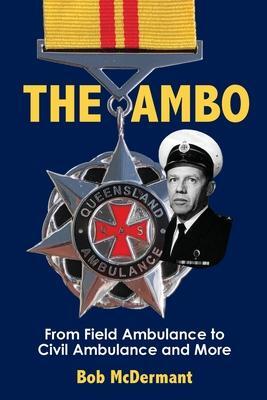
I used this method in The Ambo, a book I ghost wrote for Bob McDermant, one of the pioneers of the Queensland Ambulance Service. (QAS)
There was no formal training for ambulance officers when Bob joined QAS in 1947. He and his colleague Arthur agitated for a training course for years, with no luck.
A pivotal moment in the story is when they are finally given permission to run a course, and this is where I begin it.
‘Training? We’ve tried all that rubbish, it doesn’t work,’ the Superintendent said.
This dismissive and archaic attitude to training, that wouldn’t be shared by many today, hooks the reader straight away.
I go on to briefly summarise Bob and Arthur’s struggle to persuade the upper echelon to implement training courses, and then the unexpected and joyful moment when they’re finally given the go-ahead.
Then I end the chapter with:
I was dumbfounded. Ten years of agitating for training, banging our heads against the brick wall of apathy and resistance to change, was finally over.
But it was only the beginning of another long and challenging road.
The reader is then compelled to keep reading to find out what other challenges Bob and Arthur have to overcome.
Write In ThemesWith this method, the book is not structured chronologically, but according to themes. A good example of this is Billy Connolly’s recent autobiography Windswept and Interesting.
Each chapter deals with a different topic or theme and the stories within the chapter are relevant to that theme.
For example, the chapter Never Change Planes to Wash Your Socks is about the various holidays Connolly’s been on, the chapter If No-one Gives You a Medal, Design Your Own is about his experiences of fear and the chapter If You Arrive On a Motorcycle You’ll Havea Better Day is about (you guessed it!) his love of motor bikes.
Even though the book is not written chronologically, the stories within the chapters generally are, so there is still an overall narrative arc, that reveals how the events in his life have influenced his behaviour and attitudes and led him to where he is today.
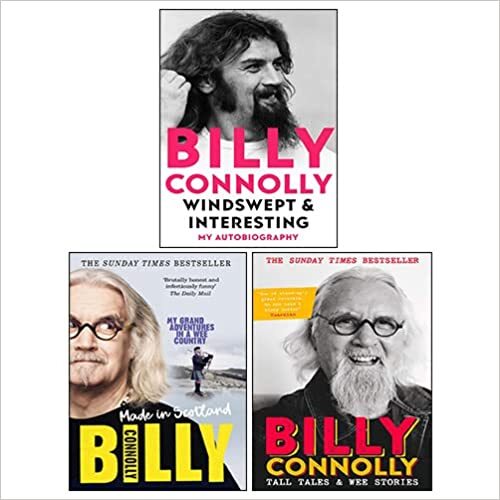
Needless to say, the book is funny, entertaining and poignant, and well worth a read.
If your life lends itself to being divided into topics or themes – and as you can see from the above examples, they don’t have to be deep and meaningful - this kind of structure is well worth considering.
Particularly if you can come up with amusing chapter titles. It’s all part of getting the reader hooked.
‘How do I do that?’ I hear you cry.
Firstly, what is an essay? The definition is vague and can overlap with other forms of writing.
‘A short piece of writing on a particular subject.’
‘A piece of writing that gives the author’s own argument.’
British actor Minnie Driver’s memoir is called Managing Expectations – A Memoir in Essays.
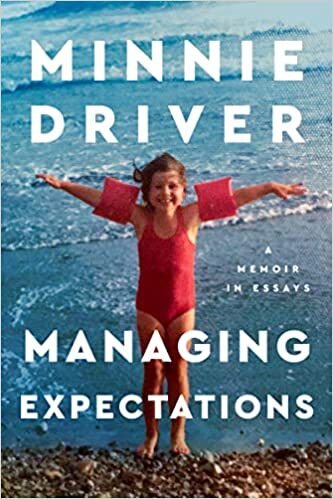
Each chapter is about a certain part of her life. There are a number of scenes in each chapter, some only one line, others are pages long.
The reason the chapters are referred to as essays is because she is making a point or putting across a certain point of view in each one.
For example, the chapter You’re It talks about the unreality and fickleness of fame. The chapter Other People’s Drugs is about the role luck and coincidence plays in success in the acting industry.
Although the chapters are chronological, there are gaps in Driver’s life that she makes no effort to fill in; however, she writes in such a way that the reader can easily follow the trajectory.
Driver readily admits to deliberately leaving out parts of her life – ‘largely because there’s a lot I don’t remember, and a lot that’s not worth talking about.’
The bottom line is, writing a memoir in essays is effective if you have particular ideas/opinions/reflections that you want to convey.
If you think that would work for your memoir, I’d recommend reading Driver’s memoir to see how she does it. Besides that, it’s a good read – entertaining and heart-warming.
Divide Your Story Into PartsYou can also divide your story into parts. Each part has a theme, and the chapters within it reflect that theme. Of course, the parts must also form a cohesive narrative arc.
This is similar to number 2, Writing In Themes, except each part, instead of each chapter, has a theme.
A good example of this is the best-selling memoir Untamed by Glennon Doyle. This consists of three parts, each one representing a major emotional state of being or shift in her life.
The first part is named Caged. Each chapter is a vignette of Doyle’s life describing how she feels caged – by society’s rules and expectations and her own perceived limitations.
The second part, Keys, is about Doyle discovering the possibilities of a different way of life in which she is honouring herself and her desires, and beginning to make changes.
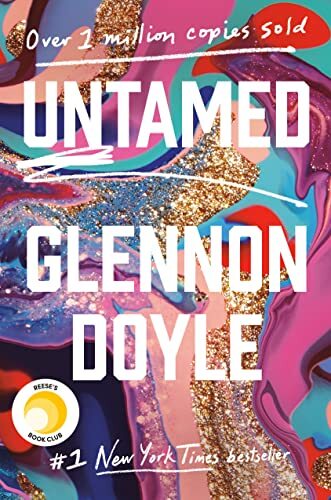
The third part, named Free, is by far the longest. It’s about the challenges Doyle faces and the rewards she enjoys as she embraces her newfound freedom.
The chapters within each part are short and pithy and jump back and forth in time.
This can be a little disjointing for the reader, but it’s meant to demonstrate that each of these emotional states can happen at any stage of your life.
If you want to use this method of writing your memoir, you could make the chapters in each part chronological, for a smoother flowing narrative.
Again, if this appeals to you, I’d recommend reading this candid and inspirational book.
Write Memoirs By Reading MemoirsAs you can see, there are many different and interesting ways to write a memoir, which are fun to experiment with.
And by reading memoirs, you'll get even more ideas.
I’d love to know if you’ve tried any of these methods yourself – tell me about it in the comments box below.
And if you want to write your memoir, but would prefer someone else to do it for you, I can help you.
Click the button below and simply enter your name and email address. I’ll get back to you as soon as I can and we can set up a time to chat.
The post How Many Ways Can You Write A Memoir? appeared first on Robin Storey.
How Many Ways Can Your Write A Memoir?
This post was written by Robin Storey.
How many ways can you write a memoir? Let me count the ways...
Many people who decide to write their memoir or life story, especially if it's their first foray into writing, think that the best way to do it is chronologically - starting with their childhood ( 'I was born into a poor but honest family in a little village in the Cotswolds'), then narrating all the events of their life in a linear manner to the present ('And now here I am in the twilight of my life, surrounded by my loving grandchildren.’)
But there are many other ways to write a memoir, which can make for a much more original and compelling story than the standard chronological narrative.
Here are some of those methods.
Table of Contents1. Start In The Middle2. Write In Themes3. Write In Essays4. Divide Your Story Into Parts5. Write Memoirs By Reading MemoirsStart In The MiddleIf you read fiction, particularly suspense or crime novels, you’ll notice that authors often use this trope. The prelude or first chapter, usually short, describes a dramatic incident from the middle of the novel. It grabs your attention, ends on a cliffhanger and compels you to keep reading.
In the next chapter, the book then jumps back to the beginning of the story and works its way chronologically towards this incident, and then to the end.
This can work just as well for a memoir, and is a very effective way to get the reader hooked on your story right away.
Think of an incident that caused a transformation in you and/or your life - for example, leaving a marriage, starting a travel adventure, doing a course that changed you. Often it will be the climax of your story.
Then write a short account of it, just enough that the reader can follow what’s happening without a lot of backstory. Make sure you jump right into the story in the first couple of lines to get the reader’s attention.
At the end of the chapter, leave the resolution of that incident hanging, with just a hint of what’s to come.

I used this method in The Ambo, (Link) a book I ghost wrote for Bob McDermant, one of the pioneers of the Queensland Ambulance Service. (QAS)
There was no formal training for ambulance officers when Bob joined QAS in 1947. He and his colleague Arthur agitated for a training course for years, with no luck.
A pivotal moment in the story is when they are finally given permission to run a course, and this is where I begin it.
‘Training? We’ve tried all that rubbish, it doesn’t work,’ the Superintendent said.
This dismissive and archaic attitude to training, that wouldn’t be shared by many today, hooks the reader straight away.
I go on to briefly summarise Bob and Arthur’s struggle to persuade the upper echelon to implement training courses, and then the unexpected and joyful moment when they’re finally given the go-ahead.
Then I end the chapter with:
I was dumbfounded. Ten years of agitating for training, banging our heads against the brick wall of apathy and resistance to change, was finally over.
But it was only the beginning of another long and challenging road.
The reader is then compelled to keep reading to find out whether other challenges Bob and Arthur have to overcome.
Write In ThemesWith this method, the book is not structured chronologically, but according to themes. A good example of this is Billy Connolly’s recent autobiography Windswept and Interesting.
Each chapter deals with a different topic or theme and the stories within the chapter are relevant to that theme.
For example, the chapter Never Change Planes to Wash Your Socks is about the various holidays Connolly’s been on, the chapter If No-one Gives You a Medal, Design Your Own is about his experiences of fear and the chapter If You Arrive On a Motorcycle You’ll Have a Better Day is about (you guessed it!) his love of motor bikes.
Even though the book is not written chronologically, the stories within the chapters generally are, so there is still an overall narrative arc, that reveals how the events in his life have influenced his behaviour and attitudes and led him to where he is today.

Needless to say, the book is funny, entertaining and poignant, and well worth a read.
If your life lends itself to being divided into topics or themes – and as you can see from the above examples, they don’t have to be deep and meaningful - this kind of structure is well worth considering.
Particularly if you can come up with amusing chapter titles. It’s all part of getting the reader hooked.
‘How do I do that?’ I hear you cry.
Firstly, what is an essay? The definition is vague and can overlap with other forms of writing.
‘A short piece of writing on a particular subject.’
‘A piece of writing that gives the author’s own argument.’
British actor Minnie Driver’s memoir is called Managing Expectations – A Memoir in Essays.

Each chapter is about a certain part of her life. There are a number of scenes in each chapter, some only one line, others are pages long.
The reason the chapters are referred to as essays is because she is making a point or putting across a certain point of view in each one.
For example, the chapter You’re It talks about the unreality and fickleness of fame. The chapter Other People’s Drugs is about the role luck and coincidence plays in success in the acting industry.
Although the chapters are chronological, there are gaps in Driver’s life that she makes no effort to fill in; however, she writes in such a way that the reader can easily follow the trajectory.
Driver readily admits to deliberately leaving out parts of her life – ‘largely because there’s a lot I don’t remember, and a lot that’s not worth talking about.’
The bottom line is, writing a memoir in essays is effective if you have particular ideas/opinions/reflections that you want to convey.
If you think that would work for your memoir, I’d recommend reading Driver’s memoir to see how she does it. Besides that, it’s a good read – entertaining and heart-warming.
Divide Your Story Into PartsYou can also divide your story into parts. Each part has a theme, and the chapters within it reflect that theme. Of course, the parts must also form a cohesive narrative arc.
This is similar to number 2, writing in themes, except each part, instead of each chapter, has a theme.
A good example of this is the best-selling memoir Untamed by Glennon Doyle. This consists of three parts, each one representing a major emotional state of being or shift in her life.
The first part is named Caged. Each chapter is a vignette of Doyle’s life describing how she feels caged – by society’s rules and expectations and her own perceived limitations.
The second part, Keys, is about Doyle discovering the possibilities of a different way of life in which she is honouring herself and her desires, and beginning to make changes.

The third part, named Free, is by far the longest. It’s about the challenges Doyle faces and the rewards she enjoys as she embraces her newfound freedom.
The chapters within each part are short and pithy and jump back and forth in time.
This can be a little disjointing for the reader, but it’s meant to demonstrate that each of these emotional states can happen at any stage of your life.
If you want to use this method of writing your memoir, you could make the chapters in each part chronological, for a smoother flowing narrative.
Again, if this appeals to you, I’d recommend reading this candid and inspirational book.
Write Memoirs By Reading MemoirsAs you can see, there are many different and interesting ways to write a memoir, which are fun to experiment with.
And by reading memoirs, you'll get even more ideas.
I’d love to know if you’ve tried any of them yourself – tell me about it in the comments box below.
And if you want to write your memoir, but would prefer someone else to do it for you, I can help you.
Click the button below and simply enter your name and email address. I’ll get back to you as soon as I can and we can set up a time to chat.
The post How Many Ways Can Your Write A Memoir? appeared first on Robin Storey.
August 14, 2022
Vulnerability In Writing Memoirs
This post was written by Robin Storey.
Vulnerability in writing memoirs. It's a real thing, trust me.
You’ve gone through the agony and ecstasy of writing your memoir, revised it until you were sick of the sight of it, had it proofread, and it’s as good as it’s ever going to be.
Now it’s time to publish it.
Publishing a memoir is scary. Not as scary as base jumping or waterfall kayaking, but it’s all relative.
There would probably be some who’d prefer to do those things than publish a memoir – if they lived long enough.
A well-written memoir includes not only events, but thoughts and emotions. It’s your emotional journey that give it depth and meaning, and allow readers to see you as a real and authentic person and relate to you and your experiences.
But it can be scary because you don’t know how they’re going to react, especially if you’ve chronicled some of your unkind or weird thoughts, extreme emotions or bizarre behaviour.
You’re worried that people will think you’re crazy – or even worse, a horrible person.
Poet Edna St Vincent Millay famously said, ‘A person who publishes a book appears wilfully in the public eye with his pants down.’
Even more so if you’ve written a memoir – like those dreams you had as a kid about turning up to school stark naked. (Or was that just me?) If you’re writing fiction, you can hide to some extent behind your characters, but your memoir is all about you, so there’s nowhere to hide.
I can empathize completely with you, because having written and published my own memoir Making the Breast of It, about my breast cancer journey, I know that feeling of trepidation.
It’s all about being vulnerable. The dictionary defines vulnerability as ‘the quality or state of being exposed to the possibility of being attacked or harmed, either physically or emotionally.’
As a writer it’s not so much fearing readers coming after you with an axe, it’s the verbal and/or emotional fallout – criticism, judgment or rejection.
In her blog post How To Be Vulnerable When Writing Memoir, acclaimed memoirist Marion Roach Smith introduces us to Theo Pauline Nestor, who wrote Shame, Vulnerability and the Art of Writing Memoir, and How To Sleep Alone in a King Size Bed.
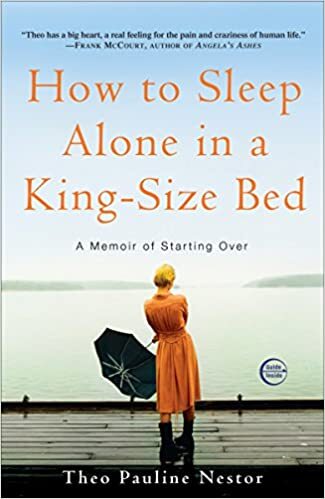 The Most Compelling Memoirs
The Most Compelling MemoirsNestor says, ‘The memoirs we find most compelling and evocative are generally the ones in which the writer makes herself vulnerable by exploring topics that carry a certain heft of shame, that discuss those topics we speak of usually with just the closest of friends.’
She goes on to give an example of author Caroline Knapp’s accounts of hiding liquor bottles, drunk driving, and her obsessive relationship with her boyfriend in Drinking: A Love Story.
Nestor goes on to say, ‘These moments of shame that even the boldest memoirist can dread revealing are the very ones that memoir readers come to the page hungry for, not necessarily because they want to know every sordid detail of our lives, but because memoir readers crave the reader/author intimacy that occurs when we selectively share those moments which most of us wish to hide.
Memoir readers, perhaps more than those of any other genre, seek authenticity and companionship.’
However, the vulnerability we feel about publishing our memoir is not always about shame. Sometimes it's just about feeling foolish or embarrassed.
For instance, take a scene in my memoir Making the Breast of It, in which I meet Scott, the surgeon who was going to do my lumpectomy:
He’s young and fresh-faced, with blue eyes and a gentle and compassionate manner. And warm hands. I know this because I didn’t flinch as he examined my breast. (Hand temperature should be one of the criteria for entrance into medical school). In fact, if I were 30 years younger, I’d probably have a crush on him. I wonder if he’s married—thinking of my 28-year-old-unattached daughter. Maybe he could be my son-in-law. But how many men could admit to having felt their mother-in-law’s breast? Forget that idea.
I thought of the reaction of readers to a 60 year old woman ogling her young surgeon. And then I cringed when I thought of Scott reading it himself.
But I consoled myself with the fact that this was highly unlikely. And even if he did, and remembered who I was (another very unlikely scenario), hopefully he’d be flattered, not repulsed.
Another scene in my book made me feel a bit embarrassed about my irrational and somewhat superficial thinking.
I was ruminating over my mortality, (cancer tends to have that effect on you), and bemoaning the fact that because I didn’t have a wide circle of friends, I wouldn’t have many people at my funeral:
Was the number of people who attended your funeral a measure of your life’s worth, and the impact you had had on the world? If so, I had some serious work ahead of me. I needed to embark on a campaign to be more sociable and make new friends; ie going out more, maybe joining a few clubs, doing more at-home entertaining.
Then, having made these new friends, I’d have to keep in regular contact. Friends you’ve known for years (which comprise a good part of my social circle) don’t care if you only phone them once every three months, but new friendships require much more maintenance. (‘Robin who? I only met her a couple of times. She died? I won’t bother going to her funeral’).
It was written tongue-in-cheek, but there was an underlying fear. The point is, of course, that I won’t know or care when I’m dead how many people go to my funeral, but that’s the irrational nature of emotions.
Knowing that didn’t stop me being concerned about not having enough friends to make a decent showing, and thinking that if a jam-packed funeral was a measure of a life well-lived, then only having a few attendees meant that somehow, your life had been less valuable.
As someone pointed out to me, ‘All the people at the jam-packed funeral could have hated the person; they just turned up to make sure he was dead!’
You're Not AloneThe good thing about writing about revealing your thought and emotions in your memoir is that you’re not alone.
I can almost guarantee that whatever you’ve thought or felt, someone else, probably many someones, will have had those very same thoughts and feelings. And they’ll be glad that you’ve put them into words, because they realise they’re not alone.
The post Vulnerability In Writing Memoirs appeared first on Robin Storey.
July 7, 2022
Memoir Writing: Why Tell Your Story?
This post was written by Robin Storey.
Memoir writing – it seems as if everybody’s doing it. Or thinking of doing it. There are as many reasons for writing a memoir as there are authors, but in this blog post I’m going to give you some compelling reasons for writing your memoir that you may not have considered.
Table of Contents1. Memoir Meaning2. Would Anyone Be Interested?3. Memoir Examples4. The Experience Memoir4.1 -MAKING THE BREAST OF IT: BY ROBIN STOREY4.2 -WOBBLY WOMAN MEMOIRS 1: BY LEEZA BARIC5. The Event Memoir5.1 -THINGS I LEARN FROM FALLING: BY CLAIRE NELSON5.2 -WILD: BY CHERYL STRAYED6. The Childhood Memoir6.1 -ANGELA'S ASHES: BY FRANK McCOURT6.2 -THE LIAR'S CLUB: BY MARY KARR7. The Family Memoir7.1 -INHERITANCE: BY DANI SHAPIRO7.2 -DRESS YOUR FAMILY IN DENIM AND CORDUROY: BY DAVID SEDARIS8. Why Write A Memoir?9. Travel Memoirs9.1 -A YEAR IN PROVENCE: BY PETER MAYLE9.2 -DOWN UNDER: BY BILL BRYSON10. Personal Development Memoirs10.1 -THE HAPPINESS PROJECT: BY GRETCHEN RUBIN10.2 -MY YEAR OF LIVING MINDFULLY: BY SHANNON HARVEY11. Business Memoirs11.1 -SHOE DOG: BY PHIL KNIGHT11.2 -THE RIDE OF A LIFETIME: BY ROBERT IGER12. Memoir Writing ServicesMemoir MeaningFirst, we need to get straight what a memoir is, because many people still interchange the words memoir and autobiography.
An autobiography is the story of your entire life, whereas a memoir is about a specific period of your life, which could cover months or years.
Sometimes a memoir incorporates a theme – for example, relationships you’ve had, travels you’ve been on, jobs you’ve had – which may cover the whole of your life.
But it’s not about your entire life, because you only write about the parts of your life that are relevant to that theme.
Here's more about memoir vs autobiography here.
Would Anyone Be Interested?Let’s assume you have a story you want to write that fits the criteria of a memoir. You may be asking yourself, why should I write this? Would anybody be interested?
And the answer is Yes!
We’re all voyeurs at heart - we love to read the details of someone else’s life, particularly if it’s written in an engaging manner. There’s more on how to do this in the blog post I’ve linked to in the section above.
Readers can gain a lot from reading memoirs. Apart from the entertainment factor, there’s usually something they can learn from them – how to overcome particular challenges, pursue their dreams, deal with toxic relationships, flourish after a history of abuse.
Whatever the subject matter of your memoir, someone (or a lot of someones) will benefit from it.
And isn’t that the best reason of all?
Memoir ExamplesHere are some examples of different types of memoirs. Yours may well fit into one of these categories.
The Experience MemoirThis is a memoir of an experience the author has had, which may have taken place over a short or long period of time, that has changed their life. Often it is about a struggle or challenge they overcame and how they did so.
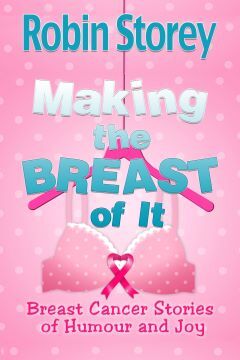 MAKING THE BREAST OF IT: BY ROBIN STOREY
MAKING THE BREAST OF IT: BY ROBIN STOREYThis is my account of being diagnosed with breast cancer, my treatment and how it changed my life. It’s written from a humorous point of view, focusing on the amusing incidents and the positives that resulted from it.
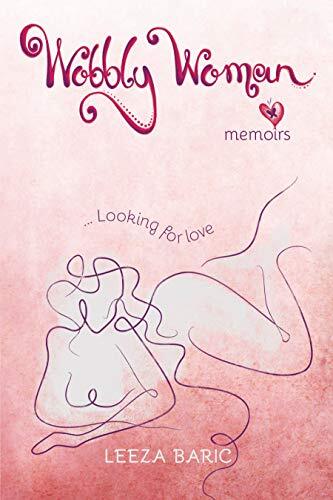 WOBBLY WOMAN MEMOIRS 1: BY LEEZA BARIC
WOBBLY WOMAN MEMOIRS 1: BY LEEZA BARICThis is an example of a memoir that encapsulates most of the author’s life, but only pertaining to the theme of looking for love. It chronicles the various relationships she’s had, and what she learnt from them during her search.
The Event MemoirThis is a memoir that focuses on one particular event in the author’s life, and the impact that event had on them. Again, it may have taken place over a period of time – for example, a long journey.
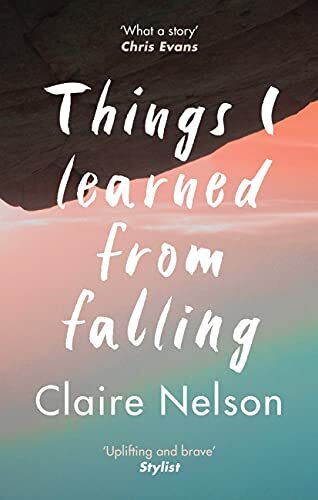 THINGS I LEARN FROM FALLING: BY CLAIRE NELSON
THINGS I LEARN FROM FALLING: BY CLAIRE NELSONThis is the story of Claire Nelson’s harrowing experience of falling 25 feet while hiking alone in the Johsua Tree National Park in California, and lying there injured for 4 days before help arrived.
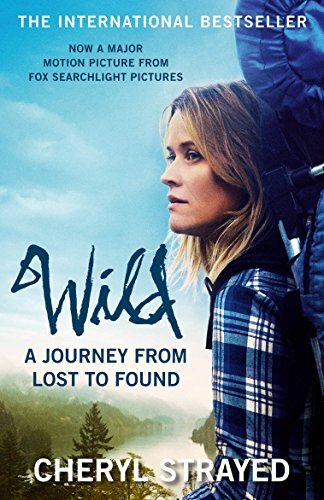 WILD: BY CHERYL STRAYED
WILD: BY CHERYL STRAYEDThis memoir, which has been made into a movie, chronicles Cheryl Strayed’s 1100 mile hike along the west coast of the US, with no previous hiking experience, in an attempt to come to terms with her mother’s death and the breakdown of her marriage.
The Childhood MemoirThis memoir, as is self-evident, is about the author’s childhood and how their experiences and the people they grew up with shaped them.
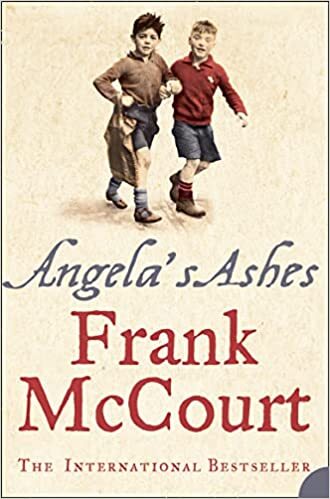 ANGELA'S ASHES: BY FRANK McCOURT
ANGELA'S ASHES: BY FRANK McCOURTThis award-winning memoir is about Frank McCourt’s childhood in the era of the Depression, firstly in Brooklyn in the US and then in the slums of Limerick in Ireland. He writes about how he endured poverty, near-starvation and cruelty.
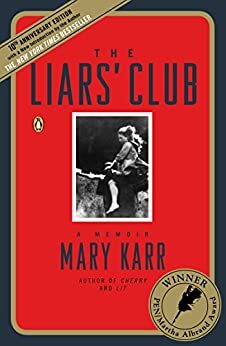 THE LIAR'S CLUB: BY MARY KARR
THE LIAR'S CLUB: BY MARY KARRIn this memoir, Mary Karr writes of growing up in a Texas refinery town with her free-spirited artist mother with mental health issues and her violent, alcoholic father. Despite her volatile family life, she learns the value of love and loyalty.
The Family MemoirThe difference between this and the childhood memoir is that the family memoir incorporates childhood and adult experiences, under the umbrella of a unifying theme.
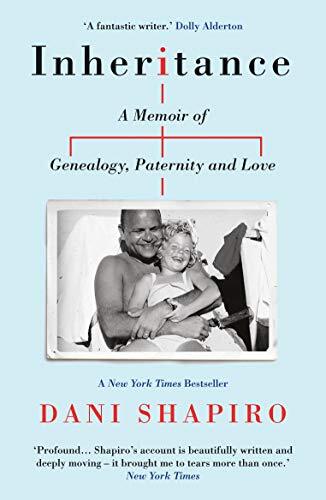 INHERITANCE: BY DANI SHAPIRO
INHERITANCE: BY DANI SHAPIROWhen Dani Shapiro discovers, after a DNA test, that her father was not her biological father, she sets out to uncover family secrets and find her biological father.
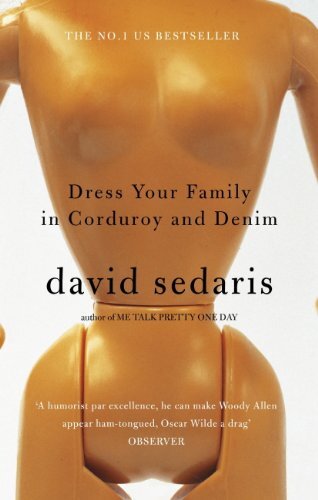 DRESS YOUR FAMILY IN DENIM AND CORDUROY: BY DAVID SEDARIS
DRESS YOUR FAMILY IN DENIM AND CORDUROY: BY DAVID SEDARISIn this book of essays, acclaimed humourist David Sedaris reveals various aspects of his eccentric family’s life, from childhood to adulthood.
Why Write A Memoir?As mentioned previously, there are many reasons for writing a memoir, but there is one reason that trumps all:
Your life is unique. Nobody has experienced your life. Nobody has walked in your shoes.
We all can experience similar events, but the process of memoir writing is what brings your unique perspective to the fore, and this is what people love to read about.
If you're still not convinced that your personal memoir would be of interest to anybody, let's have a look at a few more examples and memoir categories.
In this type of memoir, the author chronicle their travels to a particular country, travelling over a certain time span or according to a theme – for example, gastronomic tours.
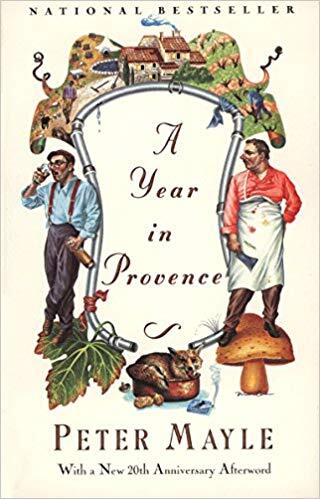 A YEAR IN PROVENCE: BY PETER MAYLE
A YEAR IN PROVENCE: BY PETER MAYLEPeter Mayle realizes a long-cherished dream of moving from the UK to Provence in France with his wife, and living in a remote 200-year-old stone farmhouse. He recounts his year of adapting to life in this country and enjoying everything it offers; the good and the not-so-good.
This memoir was the forerunner of a very popular type of travel memoir, in which the author travels to and lives in another country to renovate an old house/pub/castle, start a job or relationship or undertake some other activity far removed from their normal life.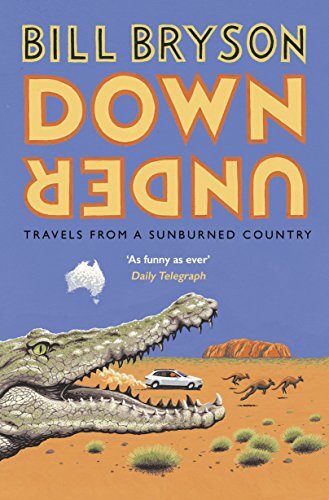 DOWN UNDER: BY BILL BRYSON
DOWN UNDER: BY BILL BRYSONMost of Bill Bryson’s travel books are memoirs, as they each encapsulate a different country, or group of countries, he has visited.
In this memoir, he relates his experiences travelling in Australia. I chose this book because it’s my home country. And would you believe it, I haven’t read it! A big oversight, which I am about to rectify. It’s always interesting to read an outsider’s view of your own country.Personal Development MemoirsIn this type of memoir, the author gives the reader insight and information about a particular aspect of personal development – for example, how to achieve happiness, control anxiety and fear, be more mindful – through the lens of their own experiences.
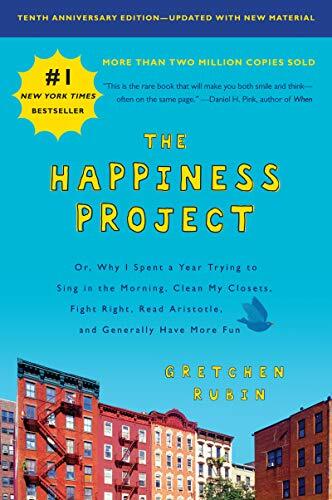 THE HAPPINESS PROJECT: BY GRETCHEN RUBIN
THE HAPPINESS PROJECT: BY GRETCHEN RUBINGretchen Rubin embarked on a year-long project to discover how to create true happiness, test-driving age-old wisdom, scientific research and lessons from popular culture.
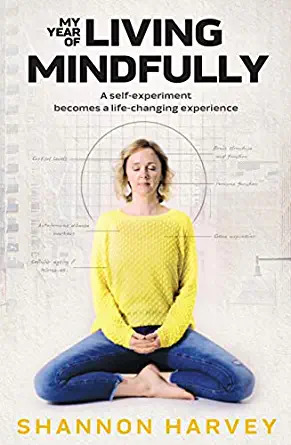 MY YEAR OF LIVING MINDFULLY: BY SHANNON HARVEY
MY YEAR OF LIVING MINDFULLY: BY SHANNON HARVEYOverwhelmed with insomnia and an incurable autoimmune disease, Shannon Harvey set out to research and experience mindfulness, to try and improve her physical and mental well-being and transform her life.
Business MemoirsIn a business memoir, the author focuses on their business or career. They chronicle their path to professional success, which can include overcoming obstacles and failures, changing direction and discovering their true path in life.
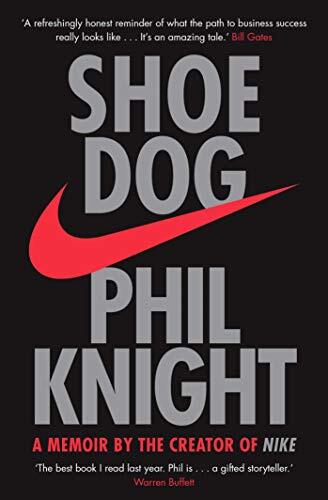 SHOE DOG: BY PHIL KNIGHT
SHOE DOG: BY PHIL KNIGHTThis memoir by the creator of Nike tells the story of beginning his shoe business with a $50 loan from his father, the risks he took and the setbacks he overcame to achieve his dream.
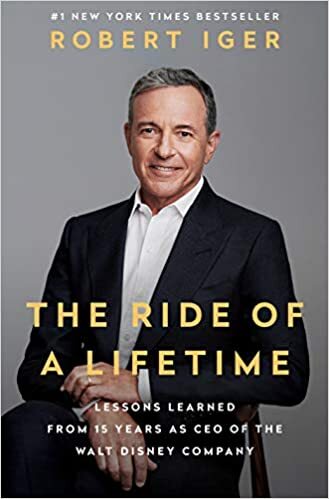 THE RIDE OF A LIFETIME: BY ROBERT IGER
THE RIDE OF A LIFETIME: BY ROBERT IGERRobert Iger took over the Walt Disney company in 2005, during a difficult time. He reveals how he turned it around to become the largest, most respected media company in the world, exploring what he regards are the necessary principles for true leadership.
Memoir Writing ServicesThat gives you a basic rundown of memoir types, and some suggestions of memoirs to read. Reading well-written memoirs on a topic similar to the one you want to write about is a sure-fire way of picking up some valuable ideas and tips for your own.
The next step in the memoir writing process is to find a writing service that fits your requirements. This can be yourself obviously, but there may be many reasons why you'd prefer someone else to do it for you.
And that's where I come in. Many of my clients have written parts of their memoir, sometimes as whole chapters or as bits and pieces of their story idea.
The reason they approach me is because they know how they want their memoir to look and read, and they need some help to turn it into the final product they have visualized.
So if you’ve got a burning desire to write your memoir, but don’t have the time or energy to complete it or do the whole thing yourself, I’d love to chat with you about writing it for you. Click the big button below to leave your details and let's get your project started.
The post Memoir Writing: Why Tell Your Story? appeared first on Robin Storey.
Memoir Writing Why Tell Your Story?
This post was written by Robin Storey.
Memoir writing – it seems as if everybody’s doing it. Or thinking of doing it. There are as many reasons for writing a memoir as there are authors, but in this blog post I’m going to give you some compelling reasons for writing your memoir, that you may not have considered.
Table of Contents1. Memoir Meaning2. Would Anyone Be Interested?3. Memoir Examples4. The Experience Memoir4.1 -MAKING THE BREAST OF IT: BY ROBIN STOREY4.2 -WOBBLY WOMAN MEMOIRS 1: BY LEEZA BARIC5. The Event Memoir5.1 -THINGS I LEARN FROM FALLING: BY CLAIRE NELSON5.2 -WILD: BY CHERYL STRAYED6. The Childhood Memoir6.1 -ANGELA'S ASHES: BY FRANK McCOURT6.2 -THE LIAR'S CLUB: BY MARY KARR7. The Family Memoir7.1 -INHERITANCE: BY DANI SHAPIRO7.2 -DRESS YOUR FAMILY IN DENIM AND CORDUROY: BY DAVID SEDARIS8. Why Write A Memoir?9. Travel Memoirs9.1 -A YEAR IN PROVENCE: BY PETER MAYLE9.2 -DOWN UNDER: BY BILL BRYSON10. Personal Development Memoirs10.1 -THE HAPPINESS PROJECT: BY GRETCHEN RUBIN10.2 -MY YEAR OF LIVING MINDFULLY: BY SHANNON HARVEY11. Business Memoirs11.1 -SHOE DOG: BY PHIL KNIGHT11.2 -THE RIDE OF A LIFETIME: BY ROBERT IGER12. Memoir Writing ServicesMemoir MeaningFirst, we need to get straight what a memoir is, because many people still interchange the words memoir and autobiography.
An autobiography is the story of your entire life, whereas a memoir is about a specific period of your life, which could cover months or years.
Sometimes a memoir incorporates a theme – for example, relationships you’ve had, travels you’ve been on, jobs you’ve had – which may cover the whole of your life.
But it’s not about your entire life, because you only write about the parts of your life that are relevant to that theme.
Here's more about memoir vs autobiography here.
Would Anyone Be Interested?Let’s assume you have a story you want to write that fits the criteria of a memoir. You may be asking yourself, why should I write this? Would anybody be interested?
And the answer is Yes!
We’re all voyeurs at heart - we love to read the details of someone else’s life, particularly if it’s written in an engaging manner. There’s more on how to do this in the blog post I’ve linked to in the section above.
Readers can gain a lot from reading memoirs. Apart from the entertainment factor, there’s usually something they can learn from them – how to overcome particular challenges, pursue their dreams, deal with toxic relationships, flourish after a history of abuse.
Whatever the subject matter of your memoir, someone (or a lot of someone's) will benefit from it.
And isn’t that the best reason of all?
Memoir ExamplesHere are some examples of different types of memoirs. Yours may well fit into one of these categories.
The Experience MemoirThis is a memoir of an experience the author has had, which may have taken place over a short or long period of time, that has changed their life. Often it is about a struggle or challenge they overcame and how they did so.
[image error] MAKING THE BREAST OF IT: BY ROBIN STOREYThis is my account of being diagnosed with breast cancer, my treatment and how it changed my life. It’s written from a humorous point of view, focusing on the amusing incidents and the positives that resulted from it.
[image error] WOBBLY WOMAN MEMOIRS 1: BY LEEZA BARICThis is an example of a memoir that encapsulates most of the author’s life, but only pertaining to the theme of looking for love. It chronicles the various relationships she’s had, and what she learnt from them, during her search.
The Event MemoirThis is a memoir that focuses on one particular event in the author’s life, and the impact that event had on them. Again, it may have taken place over a period of time – for example, a long journey.
[image error] THINGS I LEARN FROM FALLING: BY CLAIRE NELSONThis is the story of Claire Nelson’s harrowing experience of falling 25 feet while hiking alone in the Johsua Tree National Park in California, and lying there injured for 4 days before help arrived.
[image error] WILD: BY CHERYL STRAYEDThis memoir, which has been made into a movie, chronicles Cheryl Strayed’s 1100 mile hike along the west coast of the US, with no previous hiking experience, in an attempt to come to terms with her mother’s death and the breakdown of her marriage.
The Childhood MemoirThis memoir, as is self-evident, is about the author’s childhood and how their experiences and the people they grew up with shaped them.
[image error] ANGELA'S ASHES: BY FRANK McCOURTThis award-winning memoir is about Frank McCourt’s childhood in the era of the Depression, firstly in Brooklyn in the US and then in the slums of Limerick in Ireland. He writes about how he endured poverty, near starvation and cruelty.
[image error] THE LIAR'S CLUB: BY MARY KARRIn this memoir, Mary Karr writes of growing up in a Texas refinery town with a free-spirited artist mother with mental health issues and her violent, alcoholic father. Despite her volatile family life, she learns the value of love and loyalty.
The Family MemoirThe difference between this and the childhood memoir is that the family memoir incorporates childhood and adult experiences, under the umbrella of a unifying theme.
[image error] INHERITANCE: BY DANI SHAPIROWhen Dani Shapiro discovers, after a DNA test, that her father was not her biological father, she sets out to uncover family secrets and find her biological father.
[image error] DRESS YOUR FAMILY IN DENIM AND CORDUROY: BY DAVID SEDARISIn this book of essays, acclaimed humourist David Sedaris reveals various aspects of his eccentric family’s life, from childhood to adulthood.
Why Write A Memoir?As mentioned previously, there are many reasons for writing a memoir but there is one reason that trumps all:
Your life is unique. Nobody has experienced your life. Nobody has walked in your shoes.
Yes, we all can experience similar events, but the process of memoir writing is what brings your unique perspective to the fore, and this is what people love to read about.
If you're still not convinced that your personal memoir would be of interest to anybody, let's have a look at a few more examples and memoir categories.
In this type of memoir, the author chronicle their travels to a particular country, travelling over a certain time span or according to a theme – for example, gastronomic tours.
[image error] A YEAR IN PROVENCE: BY PETER MAYLEPeter Mayle realizes a long-cherished dream of moving from the UK to Provence in France with his wife and living in a remote 200-year-old stone farmhouse. He recounts his year of adapting to life in this country and enjoying everything it offers; the good and the not-so-good.
This memoir was the forerunner of a very popular type of travel memoir, in which the author travels to and lives in another country to renovate an old house/pub/castle, start a job or relationship or undertake some other activity far removed from their normal life. [image error] DOWN UNDER: BY BILL BRYSONMost of Bill Bryson’s travel books are memoirs, as they each encapsulate a different country, or group of countries, he has visited.
In this memoir, he relates his experiences travelling in Australia. I chose this book because it’s my home country. And would you believe it, I haven’t read it! A big oversight, which I am about to rectify. It’s always interesting to read an outsider’s view of your own country.Personal Development MemoirsIn this type of memoir, the author gives the reader insight and information about a particular aspect of personal development – for example, how to achieve happiness, control anxiety and fear, be more mindful – through the lens of their own experiences.
[image error] THE HAPPINESS PROJECT: BY GRETCHEN RUBINGretchen Rubin embarked on a year-long project to discover how to create true happiness, test-driving age-old wisdom, scientific research and lessons from popular culture.
[image error] MY YEAR OF LIVING MINDFULLY: BY SHANNON HARVEYOverwhelmed with insomnia and an incurable autoimmune disease, Shannon Harvey set out to research and experience mindfulness, to try and improve her physical and mental well-being and transform her life.
Business MemoirsIn a business memoir, the author focuses on their business or career. They chronicle their path to professional success, which can include overcoming obstacles and failures, changing direction and discovering their true path in life.
[image error] SHOE DOG: BY PHIL KNIGHTThis memoir by the creator of Nike tells the story of beginning his shoe business with a $50 loan from his father, the risks he took and the setbacks he overcame to achieve his dream.
[image error] THE RIDE OF A LIFETIME: BY ROBERT IGERRobert Iger took over the Walt Disney company in 2005, during a difficult time. He reveals how he turned it around to become the largest, most respected media company in the world, exploring what he regards are the necessary principles for true leadership.
Memoir Writing ServicesThat gives you a basic rundown of memoir types, and maybe some suggestions of memoirs to read. Reading well-written memoirs on a topic similar to the one you want to write is a sure-fire way of picking up some valuable ideas and tips for your own.
The next step in the memoir writing process is to find a writing service that fits your requirements. This can be yourself obviously, but more often than not you would do it through someone else.
And that's where I come in. Many of my clients have had parts of their memoir written, sometimes as whole chapters and others as bits and pieces of their story idea.
The reason they come to me, is because while they have all those bits and pieces, or know how they want their memoir to look/read, they just need some help to turn it into the final product they want.
So if you’ve got a burning desire to write your memoir, but don’t have the time or energy to complete it or do the whole thing yourself, I’d love to chat with you about writing it for you. Click the big button below to leave your details and let's get your project started.
The post Memoir Writing Why Tell Your Story? appeared first on Robin Storey.
June 8, 2022
Life Story Examples: Bob McDermant
This post was written by Robin Storey.
It's hard to find real life story examples online unless you buy the book.
Now, I'm never going to dissuade you from buying a book...
Heaven forbid.
But what I thought I'd do here is give you an example of the life story I ghostwrote for a wonderful gentleman by the name of Bob McDermant. His was a life well-lived and he gave back to the community in such a huge way.
Here's his story (or parts thereof).
‘Training? We’ve tried all that rubbish, it doesn’t work,’ the Superintendent said.
Fellow ambulance officer Arthur Deoberitz and I exchanged glances. He was as frustrated as I was.
This is the opening scene of The Ambo, a book I ghostwrote for Bob McDermant, pioneer and innovator of the Queensland Ambulance Service.
When he joined the Ambulance in 1947, Bob expected to undergo training for his role as an ‘ambo,’ but received none. Furthermore, the equipment was antiquated and the procedures were based on a manual that hadn’t been updated in 50 years.
So he and Arthur started to push for training. They discussed it with their peers as well as their superiors. And the response was always the same.
A brick wall of apathy and resistance.
It was all due to the fear of change – and in the case of his superiors, the fear of being usurped in their roles.
I can only imagine how frustrating that must have been for Bob and Arthur. But they didn’t quit. For ten years, they continued the campaign for training. Success At Last
Success At LastThen one day, a breakthrough.
Arthur called in to see Bob at work after a Union meeting.
‘They’ve decided to let us go ahead with the training,’ he said.
Bob laughed. ‘Good joke.’
‘No, it’s true.’
Bob was dumbfounded. Ten years of frustration over, just like that!
But being given permission to run a training course was just the beginning of another long and challenging road…
Ten years is a long time to keep up the momentum. I remember asking Bob,’ Did you ever think about giving up?’
‘No, never,’ he said. ‘It was too important an issue.’
I guess that’s the secret to perseverance. An unshakeable belief that whatever you’re aiming for is worth all the hardships and obstacles.
I thoroughly enjoyed writing Bob’s story, though we had some initial challenges in setting up the process.
As Bob was visually impaired and didn’t use a computer, I couldn’t email him the story for him to read to give his feedback, which is my usual process with clients.
So we did it chapter by chapter. As I finished each chapter, I would read it out to him, and he would tell me about any necessary changes or corrections.
Bob’s son Greg also printed it out for him in large letters that he could read on his magnifying machine at his leisure, in case he’d missed anything in the reading-out process.
This worked well, and I often joked with Bob about keeping up with his ‘homework.’
As Bob’s wife Gwen had passed away a few months prior, my visits to him to obtain the information for his book and his ‘homework’ were a welcome distraction from his loneliness.
More than that, it gave him a new lease of life. When he finally held the published book in his hand, tears of happiness streamed down his face.
This was a dream come true, the culmination of many years of trying to find someone to write his story.
Publishing the book was also a challenge. That exercise eventually led to me writing a post called How Do I Publish My Memoir?
 A Dream Come True
A Dream Come TrueSomeone did some research and discovered that at 96, Bob was the oldest debut author in Australia, which was news to Bob and me.
Then the requests for interviews came rolling in, and his story was featured in newspaper, magazines and on radio. He even scored a segment on national current affairs program 7.30.
This was beyond Bob’s wildest dreams, and he was over the moon. For me, this was the most satisfying part of writing his life story – helping him make his dream come true, getting his story out into the world, so that he received the acknowledgment he deserved.
Your Own Life Story ExampleIs it your dream to tell your life story? If so, I’d love to chat to you about it. Please click the button below and let's start talking about your life story.
The post Life Story Examples: Bob McDermant appeared first on Robin Storey.
May 3, 2022
How Do I Publish My Memoir
This post was written by Robin Storey.
How do I publish my memoir? That's a good question.
You’ve written your memoir or life story, had it edited and proofread and made all the necessary changes. Now it’s as good as you can possibly make it, and it’s ready to publish.
What next?
Table of Contents 1. Publishing Options2. Traditional Publishing3. Publisher Requirements4. Handling Rejection5. Pros Of Traditional Publishing6. Cons Of Traditional Publishing7. Partner Publishing8. Partner Publishing Examples9. Pros Of Partner Publishing10. Cons Of Partner Publishing11. Get Legal Advice12. Self Publishing13. Pros Of Self Publishing14. Cons Of Self Publishing15. How Do I Publish A Memoir Conclusion16. Either Way, Get It Written Publishing OptionsThere are a number of publishing options, and as I promised in my last blog post How Does Ghostwriting Work After You’ve Hired a Ghostwriter, I will now discuss those options, and the pros and cons of each.
In this blog post I am assuming you want to publish your memoir for the general public to read.
If you have written it just for family and friends, there are printing companies, both online and physical, who will print your story for you in book form, complete with photos, according to how many copies you want.
However, if you want to sell your book commercially and have it available in book stores and libraries, there is a different process involved.
There are three main ways you can publish your memoir:
Traditional PublishingTraditional or legacy publishing is where you submit your manuscript to a publisher and they accept it for publication.
Publishers can range from the large, well-known companies such as Penguin Random House and Hachette to the smaller boutique publishers such as Black Inc Books and Scribe Publications.
Google ‘memoir publishers’ in your country and make a list. Visit the website of each one and look at their submission requirements.
Each publisher will be different in what they require, but most will ask for a synopsis and the first three chapters as the minimum.
 Publisher Requirements
Publisher RequirementsIf you want your manuscript to be read, it’s important to abide exactly by the publisher’s requirements.
Patience is of the essence – it might take months for the publisher to reply to you, due to the volume of manuscripts they receive.
Once upon a time it was frowned upon to send submissions to multiple publishers at once; you were supposed to wait until you got an answer back from one before submitting your manuscript to another.
But the industry has changed since then. Publishers have realised how unworkable that is, especially with the long delays in replies, and have acknowledged the fact that authors will make simultaneous submission to other publishers.
So feel free to go ahead and submit to as many publishers as you want.
Handling RejectionIf the publisher, after reading your first 3 chapters, asks to see the rest of the manuscript, that’s great news.
It means they’re impressed with your writing and you’re head and shoulders above most of the other submissions.
But try not to get your hopes up. They may still come back with a ‘this manuscript is not for us’ reply after reading it. You will rarely get more detailed feedback than that.
The rejection may have nothing to do with the quality of the manuscript, but more to do with whether the sales department think they can sell enough copies to make money, or a myriad other factors outside your control.
And even though I’ve said, ‘don’t get your hopes up,’ you can’t help but get just a wee bit excited when the publisher asks to read the entire manuscript.
So after you receive the disappointing reply, take some time to lick your wounds and keep submitting.
If you receive an acceptance for publication, congratulations! You can really celebrate, you are one of the very few to do so.
Pros Of Traditional Publishing1. It's Cost-FreeOnce your manuscript is accepted for publication, the publisher takes on all the costs involved, from editing and proofreading to publishing and distributing the book.
2. MarketingThey will take on some of the costs of marketing, especially when it first hits the bookstores, but you will be expected to do a lot of it yourself. Especially over the long term.
There’s no getting around it – you will have to do a lot of your own promotion if you want to sell books, no matter which publishing method you choose.3. An Advance PaymentYou may receive an advance – that is a down payment, upon being accepted for publication. However you have to earn it out in royalties, so it’s really just a payment in advance for expected sales.
Many publishers, especially the smaller ones, don’t pay an advance at all. The larger ones may pay a couple of thousand dollars, if you’re lucky.
Those stories you hear about six figure advances? They do happen, but it’s the stuff of fairy tales, so don’t bother booking your round the world trip. And when they do happen, it’s even rarer for memoirs, unless you’re a celebrity.4. KudosThere is kudos in having a manuscript accepted by a publisher, because the odds of this happening are very low. So you can give yourself a pat on the back and revel in the feeling of achievement and the congratulations of your peers.
However, as I said above, it doesn’t mean that if your manuscript was rejected by traditional publishers that it’s not as good as, or even better than, those that have been published..
There are other options, as outlined below.Cons Of Traditional Publishing1. It's SlowYou will wait between 12 to 18 months, even longer, for your book to be published and hit the bookstores. If your book is relevant to a particular event, it could be published within a few months, but it doesn’t often happen.
In this case, patience is not only a virtue, it’s a necessity!
2. Little ControlAlthough some publishers invite the author’s opinion on cover design, the jacket blurb and interior layout, the final decision rests with them.
You have little control over the final product. This can be frustrating if you’re the type of person who likes to have input into all parts of the process.
On the other hand, it can be a plus. The publisher has the knowledge and experience of what is commercially viable, so you could trust their judgement and be thankful that someone is doing the work for you.3. Low RoyaltiesRoyalties from traditional publishing range from 7.5% (paperback) to 25% (e-book) of the retail price. So you have to sell a lot of books to make a decent amount of money.
Hopefully, that’s not your main reason for writing your memoir – if it is, you’ll be sadly disappointed!
Partner publishing, sometimes called hybrid publishing, is where you pay the publisher upfront to publish your book for you.
Each publisher is different in the range of services they offer, but they usually provide all the services of a traditional publisher - editing and proofreading, design and layout of the manuscript and cover, and sales and distribution.
Most companies offer varying levels of marketing and promotional services as part of their packages. Partner Publishing Examples
Partner Publishing ExamplesSome examples of well-known partner publishers are The Collective Book Studio and Deep River Books.
Publicious https://www.publicious.com.au/ is an Australian partner publisher to whom I have referred clients and whose services I recommend.
Reputable partner publishers don’t accept every manuscript submitted to them. They evaluate your manuscript against certain criteria, which are broader than that of traditional publishers, so there is definitely a higher chance of your manuscript being accepted.
Partner publishers don’t have to worry about recouping the publishing expenses through your sales, because you are paying the cost, but their aim is still to publish good quality books to maintain a certain status and reputation.
Some publishers also retain a percentage of your royalties, so they have an added incentive to publish books that they think will sell.
Pros Of Partner Publishing1. An Alternative PathIt provides an alternative route to publishing if you can’t get a traditional deal, but you don’t want to spend the time and energy to self-publish.
2. Higher RoyaltiesYou may earn higher royalties than traditional publishers offer, and some companies allow you to retain 100% of your royalties.
3. It's FastThe publishing process is a lot quicker than that of traditional publishers. Depending on the workload of the company you hire, you should have the finished product in your hands within a few weeks.
4. More ControlYou have much more input into how you want the book to look, in terms of cover design, layout, (especially if there are photos) and the jacket blurb.
If you don’t have much of an idea about any of it, the publisher will guide you with suggestions, but if you have firm ideas about what you want, they will take those into account.
It will set you back a few thousand dollars, depending on how many copies of your books you want for your own purposes, to sell yourself. And you may not recoup your expenses from the sales.
2. ScammersThere are plenty of scamming publishers around willing to take large amounts of money from aspiring authors desperate to be published.
Read the contract very carefully and don’t be afraid to ask questions if you don’t understand something. Be wary of publishers who charge large amounts of money for marketing/promotion.
Marketing is an inexact science; no-one can guarantee sales, and it’s difficult for them to prove that they’re doing what they’ve promised.
If you’re not sure about a particular partner publisher, check out this site Writer Beware, which alerts writers to all sorts of scammers.
Or type the name of the publisher into the search bar of Google, followed by the word ‘scam’ or ‘complaints,’ and see what comes up.
If you can’t find the publisher on any scam list, but you’re still not sure about them, ask them if they can put you in touch with a couple of authors who have published with them, so you can ask them about their experience. If the publisher is genuine, they’ll be willing to do that.Get Legal AdviceFollowing closely on the heels of the question; "how do I publish a memoir?", is "should I get legal advice?"
Yes. Once you’ve found a partner publisher you’re satisfied with, it’s always a good idea to have a lawyer look over the contract, to make sure there are no potential loopholes that could be to your disadvantage.
I’ve left this one till last, because it’s the most difficult, though it can also be the most rewarding. With self-publishing, as the name suggests, you take on all the publishing tasks yourself.
Of course, you don’t physically do them all (unless you’re multi-talented), but you’re the project manager who outsources the various tasks. This means you have to find:
1A Proofreader: You need a professional proofreader to fix spelling, grammar and punctuation errors in your manuscript. DO NOT skip this step. You can’t see your own mistakes, and readers will not take kindly to a book full of typos.2A Cover Designer: Again, don’t try to do this yourself, unless you have experience in this field. You need a professionally designed cover that is evocative of the story.3A Formatter: Someone who can format your manuscript for e-book (mobi for Kindle and epub for Apple devices) and print.You can do it yourself if you’re up for the challenge and willing to learn – it’s a fiddly and time-consuming process. 4DIY or Pay? If, like me, you don’t have the motivation or patience, pay someone to do it for you, and save yourself the frustration. You then need to upload the files on to the various book sales platforms, some of the main ones being Amazon, Barnes and Noble, Kobo and IngramSpark. Then comes the fun. The marketing!Pros Of Self Publishing1. Full ControlYou have full control of all aspects of publishing. This can be a little scary at first, and if this is your first experience in self-publishing, it’s a steep learning curve. But the satisfaction of seeing your book, completed and for sale, and knowing you did it all, is tremendous.
2. It's QuickOnce the manuscript is edited and formatted and the cover design done, you upload them to the various book retail sites. On most sites, you create an account and it’s free to upload your books.
One of the exceptions is IngramSpark, who charge you $49 to upload a print and e-book.
If you want to update material in your book, or fix errors that you become aware of later, it’s easy. Just make the changes and upload the new book to replace the old one. You can do this as many times as you like, with no penalty or cost.
4. Higher RoyaltiesYour control of the publishing process means you also set the price for your book. The higher the price you set, the higher the royalties – up to a point. You still have to price your book according to market trends – if you price it above the average cost of other memoirs, you won’t make any sales.
The royalties paid by digital book platforms are higher than traditional or partner publishing. On Amazon, royalties are 70% for books priced between $2.99 and $9.99, which is the price range of most books, and 35% for books below or above these prices.
Other book platforms have a similar royalty payment schedule, with slight variations.Cons Of Self Publishing1. A Lot Of WorkIt’s hard work and there’s a lot of learning to do if you’re new at it. However, there is plenty of free information on the internet on all aspects of self-publishing, and many helpful author Facebook groups.
You also have to do all the marketing yourself, which is a daunting task. There are many different ways to do this.
I would advise you to do some research; there are plenty of blog posts on this topic, for example this one on Reedsy, How to Market a Memoir – Top Tips from the Experts.
If you want to produce a quality, professional-looking book (and who doesn’t?), you can’t get around the fact that you need to spend money.
Depending on how much editing and/or critiquing you have done, plus the cost of the cover design and the formatting, you could be up for at least $2000; sometimes more.
Having said that, it’s still usually less expensive than partner publishing.How Do I Publish A Memoir ConclusionSo there you have it. The information I’ve given you is just the bare bones to get you started – each option could easily be the subject of its own blog post.
As you can see, each option has its pros and cons. Traditional publishing is the only one that won’t cost you money, but it’s also the hardest option to come by.
Many memoir authors go down the route of submitting to traditional publishers, then if they aren’t accepted, they go with partner or self-publishing.Either Way, Get It WrittenOthers don’t want to wait months for publishers to reply to them, so they self-publish. I self-published my memoir Making the Breast of It.
Admittedly, I had already self-published a few books, so the process was relatively easy.
Have you published a memoir, or thinking of it? I’d love to read about your thoughts and experiences in the comments box below.
If you’d like to discuss hiring me to write your memoir for you, click on the button below which will take you to my contact page. Submit your name and email address and I will contact you as soon as I can.The post How Do I Publish My Memoir appeared first on Robin Storey.
March 30, 2022
How Does Ghostwriting Work
This post was written by Robin Storey.
‘How does ghostwriting work?’ ‘How do you ghostwrite a book?’
I get asked these questions a lot, for two reasons.
Firstly, once people find out I’m a ghostwriter, they’re curious about how it all works. Ghostwriting is not a well-known profession and writing a book for another person, in their voice, sounds like a mammoth task. (which it is!)
Table of Contents 1. How Do I Hire A Ghostwriter?2. Ready To Start The Ghostwriting Process?3. Step 1: Planning4. Step 2: Information Gathering5. Step 3: Begin Writing6. A Word About Scheduling7. Step 4: Client Comments & Editing8. Step 5: Publish9. Publishing Options10. Step 6: Pour A Glass Of Champagne How Do I Hire A Ghostwriter?Or they’ve been thinking of hiring a ghostwriter to write their book, but are wondering what it entails, and how much time and energy they will need to put into it themselves.
If you’re in the second category and not sure how to go about hiring a ghostwriter, read my blog post, 5 Steps To Finding The Perfect Ghostwriter for some useful tips.
Ready To Start The Ghostwriting Process?Now that you’ve hired your ghostwriter and signed on the dotted line, you’re ready to roll.
What I am about to tell you is based on my own processes in writing memoirs and life stories, which are my specialty.
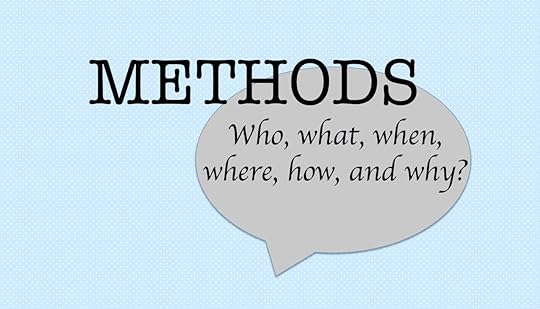 Step 1: Planning
Step 1: PlanningPlanning how the book will be written is vital, before I start writing. How will it be structured, how will it start and end, what are the main events and the climax?
What is the theme, and what does my client want the reader to gain from the book?
I find that at least some of these questions will have already been discussed with my client during the getting-to-know-you process before they officially hire me.
Ghostwriting is very much a collaborative process, and it’s important to involve my client in the planning, because they have to be happy with the way I write the book.
After we’ve brainstormed and I’ve created a plan they’re happy with, we can get down to the nitty-gritty..
Step 2: Information GatheringI do this in 3 main ways.
1. Interview The ClientInterviewing sounds very formal; even though I ask questions of the client to get the necessary information about their life, it’s more of a conversation than a back and forth question and answer.
By this stage I’ve already established a rapport with the client through the process of their hiring me and planning the book. But some of what they tell me could be sensitive or distressing, so it’s important that they feel comfortable enough with me to talk about those issues.
Of course, it’s always up to the client what goes in the book – anything that’s too upsetting, for them or others, doesn’t need to be included.
The interview is the most important way of information gathering, because it’s also the way I get to know the client’s ‘voice.’ In literary terms, this means how they express themselves, what type of language they use.
For me this is imperative, because I’m writing the story in the client’s voice, ie how they would write it.
The book will have the client’s name on it as the author, so it has to read as if it was written by them.
I record all our conversations and have them professionally transcribed into Word documents, so the information is all there to use in the story.
I can also go back and listen to any conversation again to pick up any nuances that might not be in the transcription.
If the client lives locally, we meet in person, but if not, we talk over Zoom.
It’s the next best thing to talking in person, and also means I can write stories for people all over the world. You gotta love technology!
Sometimes the client has material already written – it could be a family history, some factual information or research they’ve done themselves, or even their own attempts to write their memoir.
I always welcome this, as it saves me time and work. One client, who wanted me to write his father’s life story, provided me with a 40 000 word document of his story by a previous writer he’d hired.
He wasn’t satisfied with how she’d written it, so hired me.
I always check historical facts my client has given me, even if they swear they’re right. It’s amazing how our memory can play tricks on us.
We can be so sure of when/how/why a certain event occurred, then find out we’re wrong.
Or if I’m writing a certain scene from the past, especially if it takes place in a public arena, and the client’s memory is hazy, I’ll do some research to fill in the gaps.
What were the surroundings like? Who else would have been present and what else happened? What were the sight, smells and sounds?
All those details make the scene come alive for the reader.
I love doing research; I learn so much about so many different topics. To read more about my research, read my blog post How A Ghostwriter Does Life Story Research.
Step 3: Begin WritingEven though I’ve put this step after the information gathering, I start writing as soon as I have enough material to write the first chapter, which is usually after the first couple of interviews.
Then I write the story progressively as I obtain the information.
Feedback from the client is important – they are paying me to write the book, so they have to be happy with how I’m writing it.
Each ghostwriter is different in the way they obtain feedback. Initially I send the first couple of chapters to the client, to make sure they like the style of writing and that I have captured their voice.
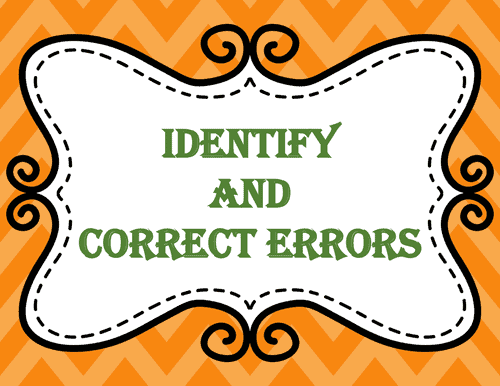 A Word About Scheduling
A Word About SchedulingThis schedule can vary, though, as it usually corresponds with the payment plan. When a payment is due, I will send what I have written so far.
Usually this is by email; however, sometimes due to the age of my clients I need to be flexible with this process.
Some older clients are not computer literate, so in that case, I will print out the relevant chapters for them to read.
One client, Bob, who was 96, didn’t use computers, was sight-impaired and could only read very large print with the help of his magnifying machine.
To save him the arduous task of reading many chapters all at once this way, I would email each chapter as I wrote it to his son Greg, who would print it out in large type.
Once the manuscript is finished, I send it to the client for final comments.
At this stage, they have already read a lot of it and suggested changes along the way, so there is usually not a lot of rewriting to be done.
When they have approved the final manuscript, I put it through its paces in my online editing tool Pro-Writing Aid, which helps me improve it for clarity and readability, as well as spelling and grammar.
But nothing beats human eyes (and brain), so after that, I send the manuscript to a proofreader for a final check of spelling, grammar and punctuation.Step 5: PublishOnce the manuscript is proofread, I send it to the client and it’s ready to publish. That’s a proud moment – for me and the client.
There are three options for publishing – self publishing, partner publishing and traditional publishing.
This involves handling and funding the entire publishing process yourself, ranging from formatting and cover design to making the book available in stores, online and physical.
You don’t necessarily need to do all those tasks yourself, you can outsource them.
You can submit your manuscript to a publisher, and if it’s accepted, they will take on the work and the cost of publishing your book, so you have no upfront costs.
Some publishers may offer a small advance, but many don’t offer any at all.
This occurs when a publisher accepts your manuscript for publication, and will do all the work involved with publishing the book, but you are expected to pay for it.
Partnership publishers have a less rigorous process of deciding what to accept for publication than traditional publishers.
Some will publish any manuscript; others will suggest necessary changes to make your book more publishable.
There is so much more to know about publishing options – it could be the subject of a blog post in itself.
And in fact, it’s going to be! Keep your eyes peeled for next month’s blog post on Best Memoir Publishing Options.
To keep you going until then, here's a blog post from Author Learning Center - 4 Ways to Publish a Book in 2022.
So that’s how ghostwriting works. It can take up to 6 months, sometimes longer, to write a book. The best part is seeing the client’s expression when they hold their book in their hand.
Ooh - I forgot to mention the last step in the process.
Oh yes, let's not forget to celebrate the victories...large and small.
I hope that answers the question; "how does ghostwriting work?". Let me know in the comments if you liked this post and any thoughts you might have about ghostwriting.
Also, if you’d like to talk to me about ghostwriting your life story or memoir, please click the button below to submit your name and email address and I will contact you as soon as possible.
The post How Does Ghostwriting Work appeared first on Robin Storey.
February 28, 2022
How A Ghostwriter Does Life Story Research
This post was written by Robin Storey.
What is it I love about life story research?
One of the many perks of being a ghostwriter of memoirs and life stories is how much I learn not only about people, but places and topics that I would never have come across otherwise.
Here are just some of the topics I’ve learnt about since beginning ghostwriting:
The mechanics of an Austin 7 carThe WW11 campaign in New GuineaThe evolution of paramedic services in QueenslandThe politics of the New South Wales government from the 1990s onCorruption in the banking/financial industries in AustraliaThe discovery of core strength and stability and its importance for our healthHealth problems experienced by astronautsA wide variety, as you can see, which obviously makes me fascinating company at parties.
Reasons For Life Story ResearchSometimes I have to verify the facts told to me by a client whose life story I’m writing, particularly if it concerns historical events. Our memories can be amazingly misleading.
For a story about a client who was bankrupted by government corruption, I had to check the political facts he gave me.
This included trawling through pages of Hansard, the transcripts of the proceedings of the Australian parliament.
(Not all research is exciting – I must admit to my eyes glazing over more than once).
Other times, if I am setting a scene in a certain place, and the client’s memory is sketchy on details, I will need to find the information myself - for example, sights, sounds and smells, so I can make the scene come alive for the reader.
And There Are Many MoreFor a recent memoir, I was writing a scene in which the client was arriving at University on her first day.
She couldn’t remember a lot of the details, so I did some investigating myself.
What did the University look like? What was the atmosphere like? Where was the car park she would have walked from? What sort of trees would she have noticed?
Sometimes photos are sufficient, but other times, it’s useful to find other people’s accounts of being in the same place at the same time.
Factors like sounds, smells and atmosphere you can imagine from the information you obtain – for example, the grandeur of the sandstone buildings, the cloying scent of jasmine, the excited chatter of the students sitting on the lawn.
Most of the research I do is on the internet, so it’s easy to get side-tracked and find myself in a rabbit hole.
Read more about those in my blog post Down the Research Rabbit Hole https://www.storey-lines.com/2017/02/08/down-the-research-rabbit-hole/
Here’s a blog post, which perhaps I should have read earlier. How to Avoid Falling Down the Research Rabbit Hole.
 The Art Of Research
The Art Of ResearchThere is an art to research. Here are the main points I’ve learned.
Check The Source of the InformationWikipedia is not always correct – even though, in the English Wikipedia, information that is published must be verifiable and provide citation links, it’s up to the reader to verify those.
And information can be added by anyone, which may not be correct, or reviewed by the relevant editor.
Credible sources include government bodies, peer reviewed scientific journals, research think tanks and professional organisations. Major newspapers, because of their high standard of reporting, are also reputable.
Facebook is not a reputable source!
I accept information as being valid if I can verify it through two reputable sources. One of them can be Wikipedia, if the other source agrees.
If the research is going to be time-consuming, I will put a placeholder in the manuscript, saying something like ‘MORE RESEARCH’ and do it later.
Spending a lot of time on research, especially in the first draft, can slow you down and make you feel as if you’re trudging through a field of treacle in wellington boots.
I often find it more psychologically uplifting to finish the first draft of the story, then go back and do the necessary background research to add colour and life to the story.
Sometimes it isn’t possible to write the story without doing some research during the process.
In that case, I find it useful to set myself a time limit – for example, an hour - to find a certain piece of information.
If you can’t find it in an hour, it probably doesn’t want to be found! However, I don’t always stick to my own rule, so in this case, do as I say, not as I do!
If you can find an expert on a certain topic and they are willing to talk to you, this is a great way of getting information straight from the horse’s mouth.
They will probably give you all sorts of extra material, and a personal perspective you won’t get from an online source.
Plus you can ask them the questions pertinent to your story. When I was writing The Ambo – From Field Ambulance to Civil Ambulance, the life story of Queensland paramedic pioneer Bob McDermant, I contacted the Queensland Ambulance historian, Mick Davies.
If you just rolled your eyes and thought, here we go, then you wouldn't be the lone ranger as my partner often says. But seriously now, life story research is fun.
I agree with Albert Einstein that research is the same as playing.
It's amazing what you find out when you start delving into the depths of a person's life. There is so much history waiting to be unleashed on the world that for a writer, it's simpy exhilarating.
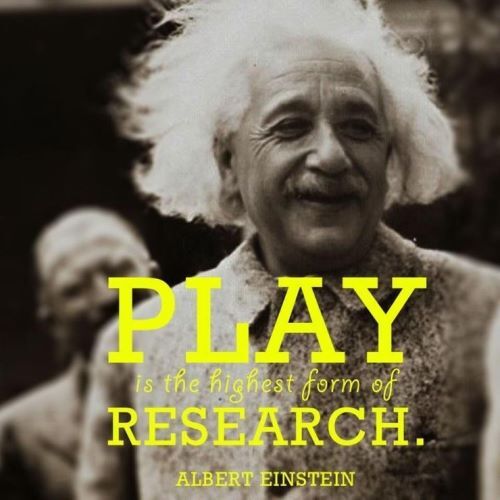 Life Story Research Conclusion
Life Story Research ConclusionSometimes, despite your best efforts, you just can’t find a certain piece of information, or verify the information you have.
In that case, my advice is to wing it and write what you think is right. Chances are, it’s not a hugely important piece of information that is central to the story, otherwise you would have found it.
If the book is published, some kind reader will soon let your client, who is the attributed author, know if you’ve got it wrong.Writing Your Life StoryIf you’d like to talk to me about writing your life story, please contact me by clicking the button below.
I will reply as soon as I can and we can chat further.
The post How A Ghostwriter Does Life Story Research appeared first on Robin Storey.
January 30, 2022
Ghostwriting Services And Fees
This post was written by Robin Storey.
Ghostwriting services and fees vary so widely that providing a direct answer to "How much does a ghostwriter cost?" is almost impossible.
But in this post I'm going to attempt just that, because it's a question that gets asked a lot, and is often answered vaguely.
First, a quick overview to answer another question, what is a ghostwriter?
A ghostwriter is someone who is paid to write material for someone else, who is then credited for the work. ‘Material’ covers a wide range of writing, as you’ll see below.
People hire ghostwriters because they don’t have the time, energy or ability to do it themselves. For more information, read my blog post, What Is A Ghostwriter?
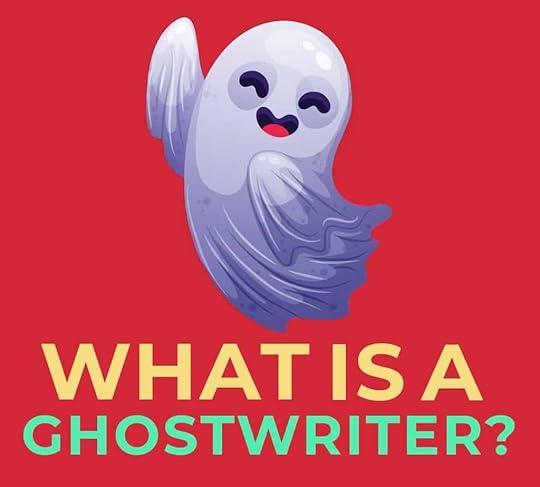 Ghostwriter Jobs
Ghostwriter JobsNaturally, the cost of hiring a ghostwriter will depend on what you want them to write. Here are some of the assignments that ghostwriters undertake:
Blog posts and other online contentSpeechesFiction NovelsAutobiographies, biographies and memoirsNon-fiction books such as business and personal development booksSong LyricsHow Much Does It Cost To Hire A Ghostwriter?Now let’s get into the nitty-gritty. The reason there is such a wide range of ghostwriting services and fees is because there is a large variation in skills and experience.
If someone is quoting a price that sounds too good to be true – for example, $200 to write a 50 000 word novel, then it is. It’s the old adage of you get what you pay for.
Ghostwriting demands a high level of skill. Not only do you have to write a book that is structurally sound and compelling reading, you have to write it in the voice of the client.
The client is being credited as the author, so it has to read as if they wrote it.
Accordingly, the fees of professional ghostwriters are commensurate with this level of skill.
There is no set standard of fees; each ghostwriter has their own fee schedule and the fee will vary from book to book, according to a number of factors:
These fees I am about to quote you are a guideline only, because the fee charged will depend on the ghostwriter’s expertise, experience and demand for their services.
A professional ghostwriter is unlikely to charge you less than $15,000 – and that may be for a short book that only needs minimal interviewing and research.
Some ghostwriters offer packages, in which the fee includes publishing and marketing. Many clients have little idea of how to go about having their book published or how to market it, so this is a useful option.
Other ghostwriters, like myself, can help clients with publishing and marketing at an additional cost, separate to the writing of the book.
Most ghostwriters have a clause in their contract about payment of fees; they will ask for a down payment before starting the work, then you pay the rest over the period of time that the book is being written.
If you’d like to know more about my ghostwriting services and fees, go to my ghostwriter page.
Hiring A GhostwriterI’ve written about this before in my blog post here 5 Steps To Finding the Perfect Ghostwriter, so I won’t go into too much detail, except to say, ‘Do Your Research.’
Actually, just read the post, it will save you time.
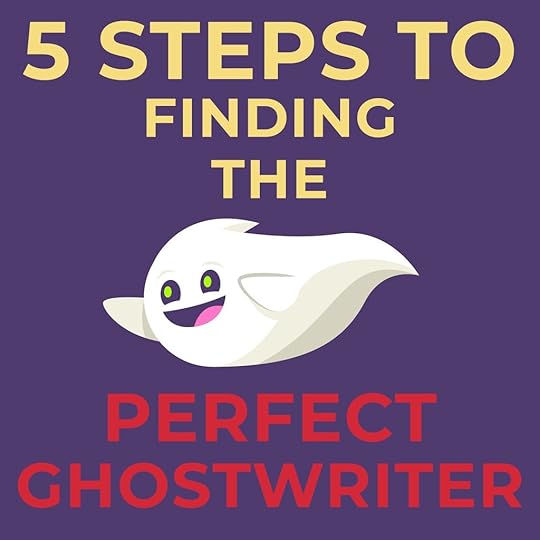 How Much Do Ghostwriters Make?
How Much Do Ghostwriters Make?Again this varies as much as the fees they charge, and successful ghostwriters can earn a six figure income. Of course you have to take into account their expenses. These can include:
Transcription of recorded interviews.
Travel to visit the client or to do research.
Hiring a professional editor and proofreader.
Indemnity insurance.
Membership of relevant professional organisations.
Professional development eg workshops, seminars.
Tools of the trade – laptops, computers etc.
Some ghostwriters work for agencies, such as Gotham Ghostwriters, who take a percentage of what they earn as commission.
Some Of The Top GhostwritersGhostwriters, especially those who write for high profile people or celebrities, often have to sign a non-disclosure agreement. This stipulates that they are not allowed to disclose that they wrote the book.
So the top level ghostwriters often stay under the radar. But there are still many who are visible, for example,
Joshua Lisec, from The Entrepreneur’s Wordsmith
Many, if not most ghostwriters, come to the profession after years of experience in other writing disciplines, such as freelance writing, copywriting, and novel writing.
Joshua started out writing his own novels and now specializes in writing books for business owners that establish their brand and authority in their chosen field, and increase revenue and career opportunities.
Joshua’s clients include many high-profile entrepreneurs, including Scott Adams, creator of cartoon character Dilbert.
Libby Harkness is an Australian ghostwriter, who was initially a journalist and editor. She specialises in memoirs and autobiographies.
She has written the memoirs of many fascinating and inspiring people, including the best-selling Everything to Live For, the story of Turia Pitt, the athlete who suffered catastrophic burns to 65 per cent of her body in a bush fire while competing in an ultramarathon in the remote Western Australia.
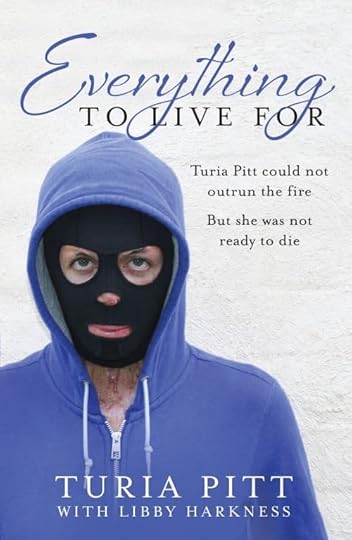
Not all clients ask for a non-disclosure agreement, and the above-mentioned clients of Joshua and Libby were happy for it to be made public knowledge that their books were ghostwritten.
If you want a glimpse into the world of celebrity ghostwriting, this article is an eye-opener.
Michelle Obama, Prince Harry and Hilary Clinton are among those mentioned, who have used ghostwriters for their books.
Because there is such a wide variation in ghostwriting fees, this is a very important part of finding the right ghostwriter for your story.
Beware of a writer who quotes a very low fee, because you may be disappointed in the quality of the work.
If you want a professionally written book that tells your story just the way you want and is a book that you can be proud of, you need to be prepared to pay accordingly.
Talk to as many ghostwriters as it takes to find someone who can write your book at the price you can pay.
If you’d like to talk to me about ghostwriting your book, click the button below.
And if you’d like to subscribe to my monthly newsletter about ghostwriting memoirs and non-fiction in general, click here.
The post Ghostwriting Services And Fees appeared first on Robin Storey.



